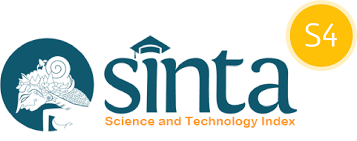Log Monitoring System using Quick Response (QR) Code: A State University’s COVID – 19 Contact Tracing System
DOI:
https://doi.org/10.34010/injiiscom.v3i2.9037Keywords:
Information System, ISO/IEC 9126, Monitoring System, System EffectivenessAbstract
Contact tracing is the technique employed by public health units and the national close contact service to track down persons who may have been exposed to COVID-19 by interaction with a suspect, confirmed, or probable case during their infectious period. This study focused on the development of a Log Monitoring System Using Quick Response (QR) Code in Samar State University as an institution’s tracing system for COVID – 19 preventions. The study was designed as a tool for managing the everyday logs of the employees, students, and visitors to track down the person who is in close contact to a COVID – 19 positives. The waterfall model was used in developing the system and descriptive research design was used to determine the effectiveness of the system along with functionality, reliability, usability, efficiency, maintainability, and portability. The participants of the study were the employees, students, and visitors of SSU. Each participant has given an ISO 9126 quality standard questionnaire for the evaluation of the effectiveness of the system. The result revealed that using the system, the conduct of contact tracing of the possible COVID – 19 suspected individuals was done easily and with reliability.
References
Balmes, I. L. (2016). Online Day to Day Monitoring System for Lyceum of the Philippines University-Batangas. The 2nd Multidisciplinary Research and Innovation for Globally Sustainable Development.
Bassil, Y. (2012). A Simulation Model for the Waterfall Software Development Life Cycle. International Journal of Engineering & Technology (iJET), 2(5).
Bole, G. R., More, S. P., Parnak, A. A., & Naik, L. S. (2016). QR Code Based Effective Employee Maintenance System. International Research Journal of Engineering and Technology (IRJET), 03(04), 604 - 607.
Chen, S., Yang, J., Yang, W., Wang, C., & Bärnighausen, T. (2020). COVID-19 control in China during mass population movements at New Year. The Lancet, 395(10226), 764-766.
Dunford, D., Dale, B., Stylianou, N., Lowther, E., Ahmed, M., & de la Torre Arenas, I. (2020). Coronavirus: The world in lockdown in maps and charts. BBC News, 9, 462.
Ferretti, L., Wymant, C., Kendall, M., Zhao, L., Nurtay, A., Abeler-Dörner, L., ... & Fraser, C. (2020). Quantifying SARS-CoV-2 transmission suggests epidemic control with digital contact tracing. Science, 368(6491), eabb6936.
ISO/IEC 9126 in Software Engineering. (2022). Retrieved from Greeks for Greeks: https://www.geeksforgeeks.org/iso-iec-9126-in-software-engineering/
New Zealand Government Ministry of Health. (2020). Retrieved from
https://www.health.govt.nz/system/files/documents/publications/covi
d-19_contact_tracing_qr_code_specification_25_may_2020.pdf
Tworek, K. (2018). Reliability of information systems in organization in the context of banking sector: Empirical study from Poland. Cogent Business & Management, 5(1), 1522752.
Wei, X., Manori, A., Devnath, N., Pasi, N., & Kumar, V. (2017). QR Code Based Smart Attendance System. International Journal of Smart Business and Technology, 5(1), 1-10

















